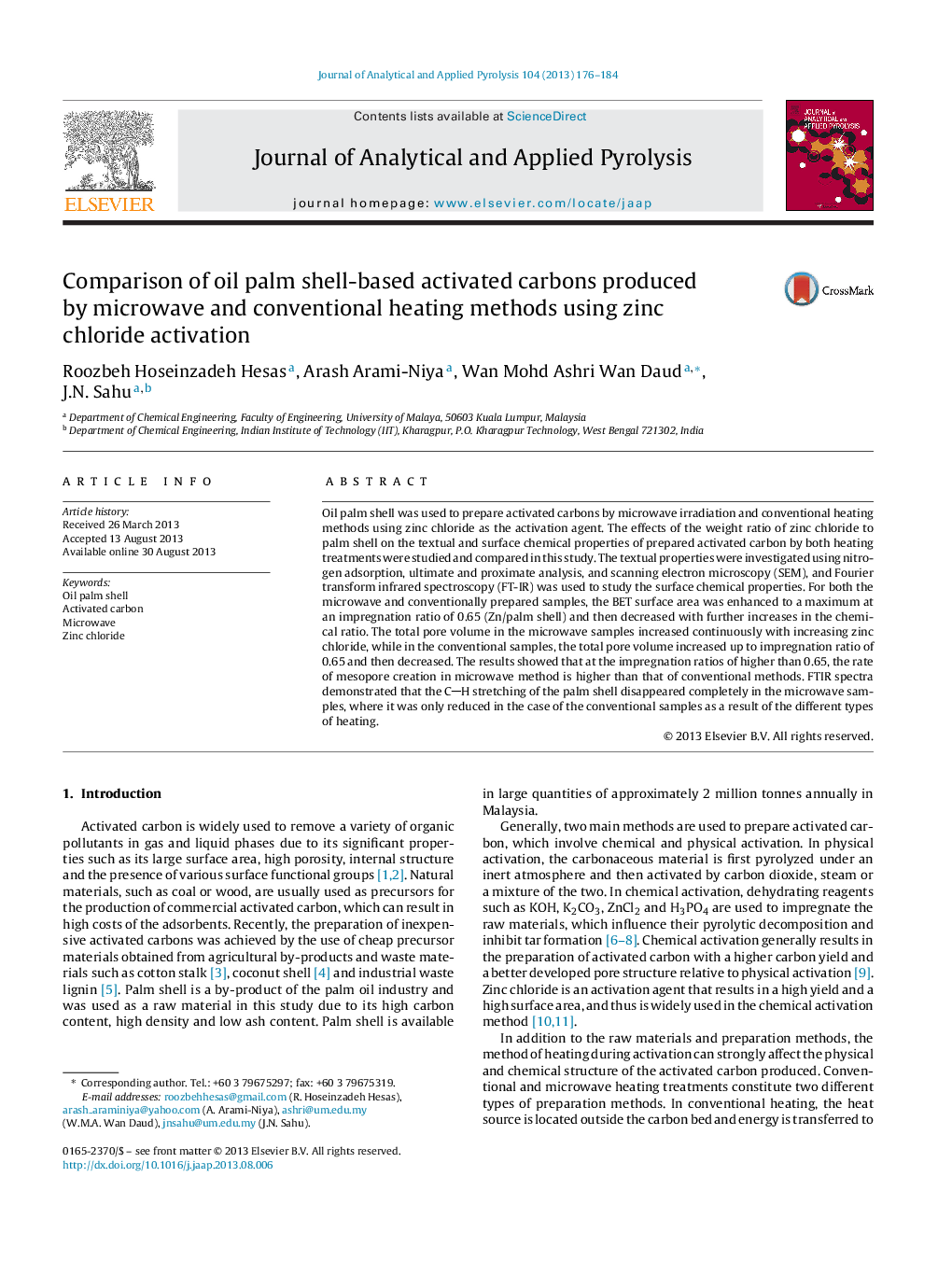| Article ID | Journal | Published Year | Pages | File Type |
|---|---|---|---|---|
| 1196777 | Journal of Analytical and Applied Pyrolysis | 2013 | 9 Pages |
•Microporous palm shell based activated carbons with high SBET by both heating methods.•In microwave method, total pore volume increased continuously with increasing in ZnCl2 ratio.•Totally different external surface structure of the microwave and conventional samples.•Less weak surface functional bands on the microwave samples.
Oil palm shell was used to prepare activated carbons by microwave irradiation and conventional heating methods using zinc chloride as the activation agent. The effects of the weight ratio of zinc chloride to palm shell on the textual and surface chemical properties of prepared activated carbon by both heating treatments were studied and compared in this study. The textual properties were investigated using nitrogen adsorption, ultimate and proximate analysis, and scanning electron microscopy (SEM), and Fourier transform infrared spectroscopy (FT-IR) was used to study the surface chemical properties. For both the microwave and conventionally prepared samples, the BET surface area was enhanced to a maximum at an impregnation ratio of 0.65 (Zn/palm shell) and then decreased with further increases in the chemical ratio. The total pore volume in the microwave samples increased continuously with increasing zinc chloride, while in the conventional samples, the total pore volume increased up to impregnation ratio of 0.65 and then decreased. The results showed that at the impregnation ratios of higher than 0.65, the rate of mesopore creation in microwave method is higher than that of conventional methods. FTIR spectra demonstrated that the CH stretching of the palm shell disappeared completely in the microwave samples, where it was only reduced in the case of the conventional samples as a result of the different types of heating.
